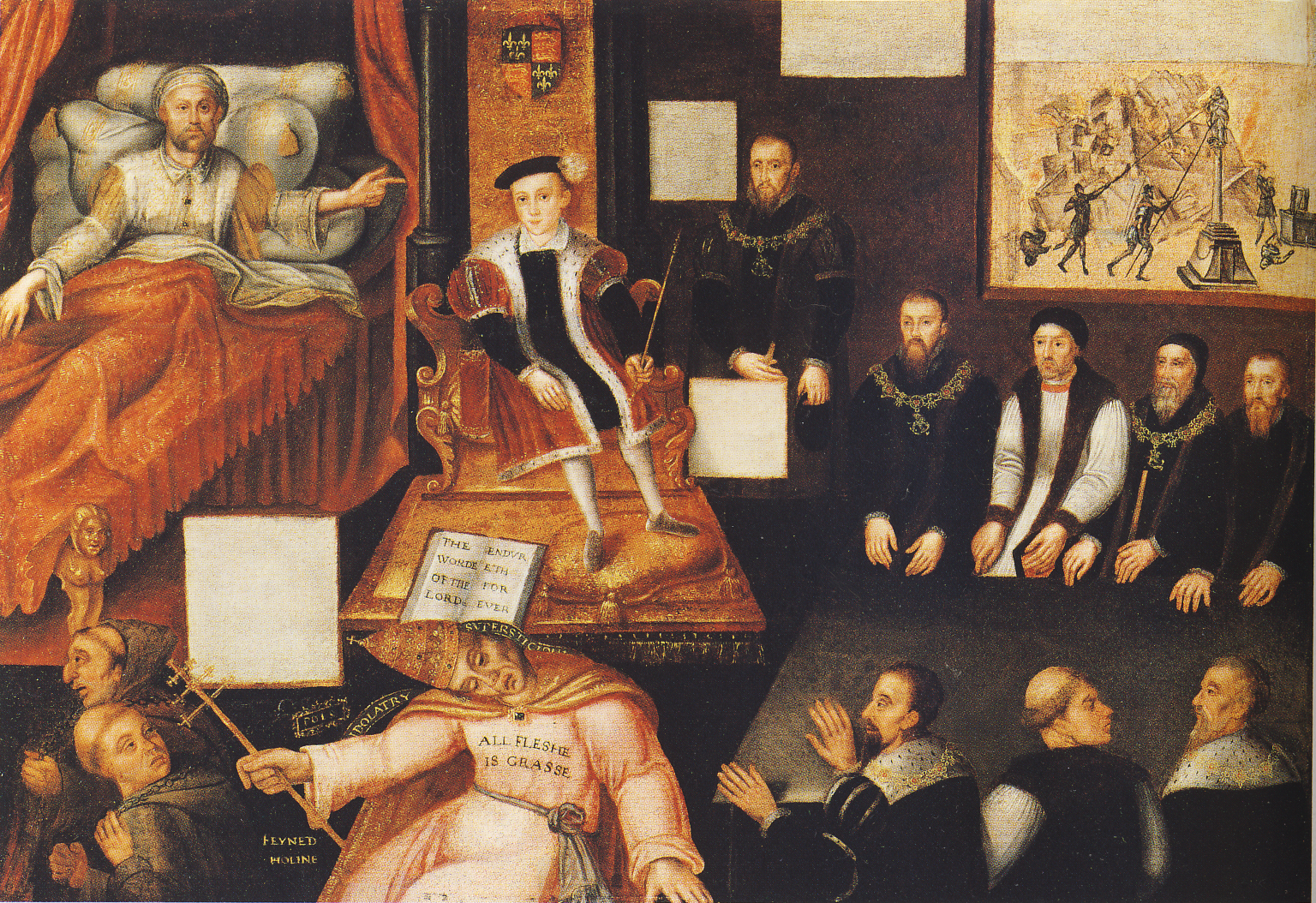Putting away of Books and Images Act 1549 on:
[Wikipedia]
[Google]
[Amazon]
 The Act for the abolishing and putting away of diverse books and images 1549 (3 & 4 Edw. 6 c. 10) was an Act of the
The Act for the abolishing and putting away of diverse books and images 1549 (3 & 4 Edw. 6 c. 10) was an Act of the
 The Act for the abolishing and putting away of diverse books and images 1549 (3 & 4 Edw. 6 c. 10) was an Act of the
The Act for the abolishing and putting away of diverse books and images 1549 (3 & 4 Edw. 6 c. 10) was an Act of the Parliament of England
The Parliament of England was the legislature of the Kingdom of England from the 13th century until 1707 when it was replaced by the Parliament of Great Britain. Parliament evolved from the great council of bishops and peers that advise ...
.
The preamble of the Act recites:
It then proceeds to order the abolishing of all other religious books, as they tend to superstition
A superstition is any belief or practice considered by non-practitioners to be irrational or supernatural, attributed to fate or magic, perceived supernatural influence, or fear of that which is unknown. It is commonly applied to beliefs ...
and idolatry
Idolatry is the worship of a cult image or "idol" as though it were God. In Abrahamic religions (namely Judaism, Samaritanism, Christianity, the Baháʼí Faith, and Islam) idolatry connotes the worship of something or someone other than the ...
; and commands all persons to deface and destroy images of all kinds that were erected for religious worship, under a penalty for any to prevent the same.
The act concludes, however, with a clause emphasising that its provisions do not extend to the effigies
An effigy is an often life-size sculptural representation of a specific person, or a prototypical figure. The term is mostly used for the makeshift dummies used for symbolic punishment in political protests and for the figures burned in certai ...
on tomb monuments:
It also stipulates that the people might still keep the primers set forth by the late king Henry VIII provided they erase the sentences of invocation, and names of popish
The words Popery (adjective Popish) and Papism (adjective Papist, also used to refer to an individual) are mainly historical pejorative words in the English language for Roman Catholicism, once frequently used by Protestants and Eastern Orthodox ...
saints.
The act was repealed by Mary I
Mary I (18 February 1516 – 17 November 1558), also known as Mary Tudor, and as "Bloody Mary" by her Protestant opponents, was Queen of England and Ireland from July 1553 and Queen of Spain from January 1556 until her death in 1558. She ...
, but James I James I may refer to:
People
*James I of Aragon (1208–1276)
*James I of Sicily or James II of Aragon (1267–1327)
*James I, Count of La Marche (1319–1362), Count of Ponthieu
*James I, Count of Urgell (1321–1347)
*James I of Cyprus (1334–13 ...
re-established it.
See also
*Iconoclasm
Iconoclasm (from Greek: grc, εἰκών, lit=figure, icon, translit=eikṓn, label=none + grc, κλάω, lit=to break, translit=kláō, label=none)From grc, εἰκών + κλάω, lit=image-breaking. ''Iconoclasm'' may also be consid ...
* Timeline of the English Reformation
References
Acts of the Parliament of England (1485–1603) 1549 in law 1549 in England Christianity and law in the 16th century Acts of the Parliament of England concerning religion Aniconism 1549 in Christianity {{statute-stub